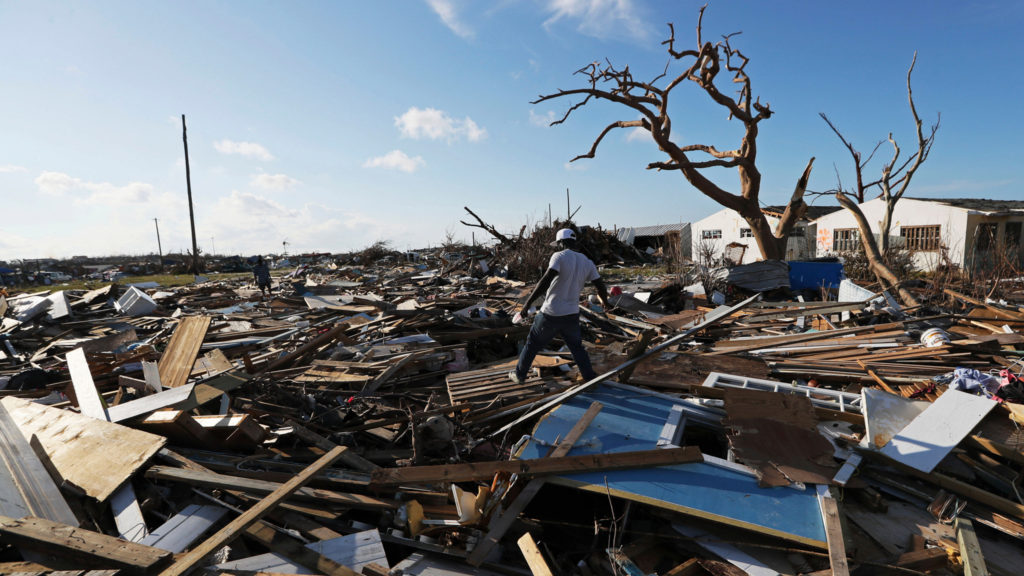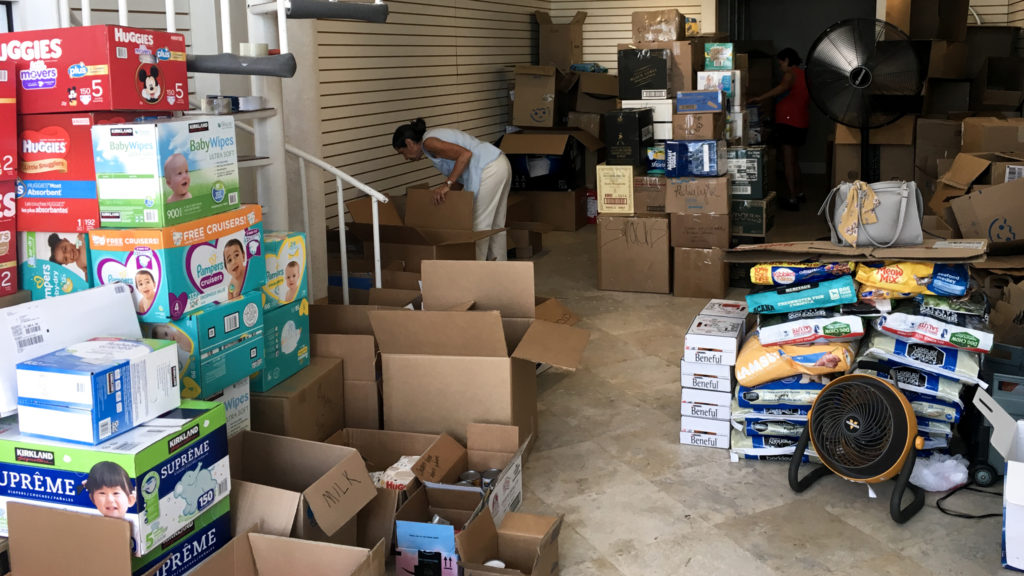Outpouring of Love for the Bahamas Sparks Aid Debate
Annali HaywardSeptember 9, 2019

A man walks over what remains of homes in the area called The Mudd after it was devastated by Hurricane Dorian on Abaco Island, Bahamas, Sunday, Sept. 8, 2019. Dorian was the most powerful hurricane in the northwestern Bahamas’ recorded history. (AP Photo/Fernando Llano)
Many Key Biscayners hold a lifelong affinity for the chain of islands 180 miles east. Proximity to soft Bahamian sands, clear blue waters and welcoming people is a privilege; even more so for those who sail to Bimini straight from the Key.
Images from the island have stirred hearts, and Key Biscayne’s effort is coming alongside those of the international community.
Rescue teams were still trying to reach some Bahamian communities isolated by floodwaters and debris after the disaster that killed at least 44 people, most of them on Abaco Island.
The U.S. Coast Guard said it has rescued a total of 290 people in the northern Bahamas following the hurricane. Six MH-60 Jayhawk helicopters and nine cutters are helping in the aid effort, the Coast Guard said.
With so much air traffic, Bahamaian officials banned non-aid flights over Grand Bahama and Abaco Islands. Meanwhile, the United Nations said eight tons of food supplies were on the way by ship.
No official figures were available, but much of the population of Marsh Harbour, home to most of the roughly 20,000 residents of Abaco, seemed to have already left. Many were staying with relatives in the capital, Nassau, others with family in Florida and other parts of the United States.
Key Biscayne’s relief efforts began in earnest – but not always in unison.
The unofficial headquarters or those favoring in-kind donations has, to date, been the impromptu center set up early on at unit No. 38 of The Square.
“Maria [Claudia Davey] texted me at 7 a.m. Monday,” says volunteer Carolyn Koslen. “By 8 a.m. we were brainstorming.”

Volunteers help stock donations for victims of Hurricane Dorian in the Bahamas, Sept. 7, 2019. The effort also involves a fundraising drive by the Key Biscayne Community Foundation. (Key News/Annali Hayward)
Koslen and Davey (wife of Key Biscayne Mayor Mike Davey) were joined by Michele Estevez, property manager at The Square, who convinced the owners of unit 38 to let them use their space.
The group quickly connected with the Key Biscayne Community Foundation, disaster response organization Third Wave Volunteers and the City of Miami to arrange transportation of donations as well as volunteers to stricken areas. Alison Thompson of Third Wave Volunteers is on the ground already, with plans to go back with another planeload later this week.
“The response has been amazing from Key Biscayne,” said Koslen.
First responses
Other residents called for action in a rather different way.
Former Village Council Member Luis de la Cruz appealed Friday for the Village to help send a group of first responders to the northern Bahamas.
“My family has been going to the Bahamas, particularly Abaco, all my life,” said de la Cruz. “I felt that when they desperately needed our help, we needed to show up.”
The idea was at first understood by some to be a call for public expenditure. Council Member Ed London referred to that notion as “absurd.”
“That’s not our job,” London said. “We’ve not been elected to make individual charitable decisions for our residents.”
However, de la Cruz later said he had explained to London his intention was never to spend taxpayer dollars – rather that the Village should help with logistics, and that a private funding mechanism instead could defray costs for volunteers. He said Fire Chief Eric Lang and Community Foundation Executive Director Melissa McCaughan White are looking into the idea.
“I think it’s much worse than people think,” said de la Cruz. “Right now it’s more about saving people.”
On the money
White and her team are aware of the complexity of disaster response, so there is a very specific list of supplies accepted at the drop-off, to which a tight list of medicines was recently added.
But it’s not just canned food and baby formula. The Community Foundation also raised $44,000 for the Bahamas – much to the relief of islanders like Jennifer Stearns Buttrick, who reasons financial donations are best.
Stearns Buttrick walks through the example of donating a case of water, imagining every stage it must go through, from sorting, packing and shipping all the way to landing in the right place – provided that can be accessed. This cost- and time-consuming process may amount to energy not “properly directed,” she argues.
Instead, when Stearns Buttrick’s children were allowed at school to choose between giving goods or monetary donations to victims, “We chose donations.” She explained to her children why it is more effective and let them choose whether, how and where money should go from their small charitable fund.
Volunteer Hedieh Kiani Sepehri has another reason monetary donations may be better: her experience of sorting donations at a Coconut Grove church with Key friends. “I cannot tell you the amount of spam, sardines and Vienna sausage dropped off,” she said. “Some people were obviously just clearing out their pantry.”
From that experience, Sepehri was inspired to put together Ziploc bags filled with sanitary supplies that Thompson can take and distribute to Third Wave volunteers on the ground as well as to victims. The effort is mostly powered by her kids’ initiative, For Teens by Teens.
White agrees to an extent that money talks: “It is always best to get financial support to organizations that understand logistics of operating post-disaster,” she says.
But just as important, says White, is to give everyone an opportunity to participate through “time, talent and treasure.”
Treasure will be needed in the “marathon” that is to come as the Bahamas rebuilds. For now, residents can give their time and talent at unit 38 at The Square until Sept. 15.
“It is the way we teach our children empathy,” says White. “It is the way we come together as a community.”
—
Donate to KBCF Emergency Fund here
List of supplies here
Associated Press Reporter Michael Weissenstein contributed to this report.


